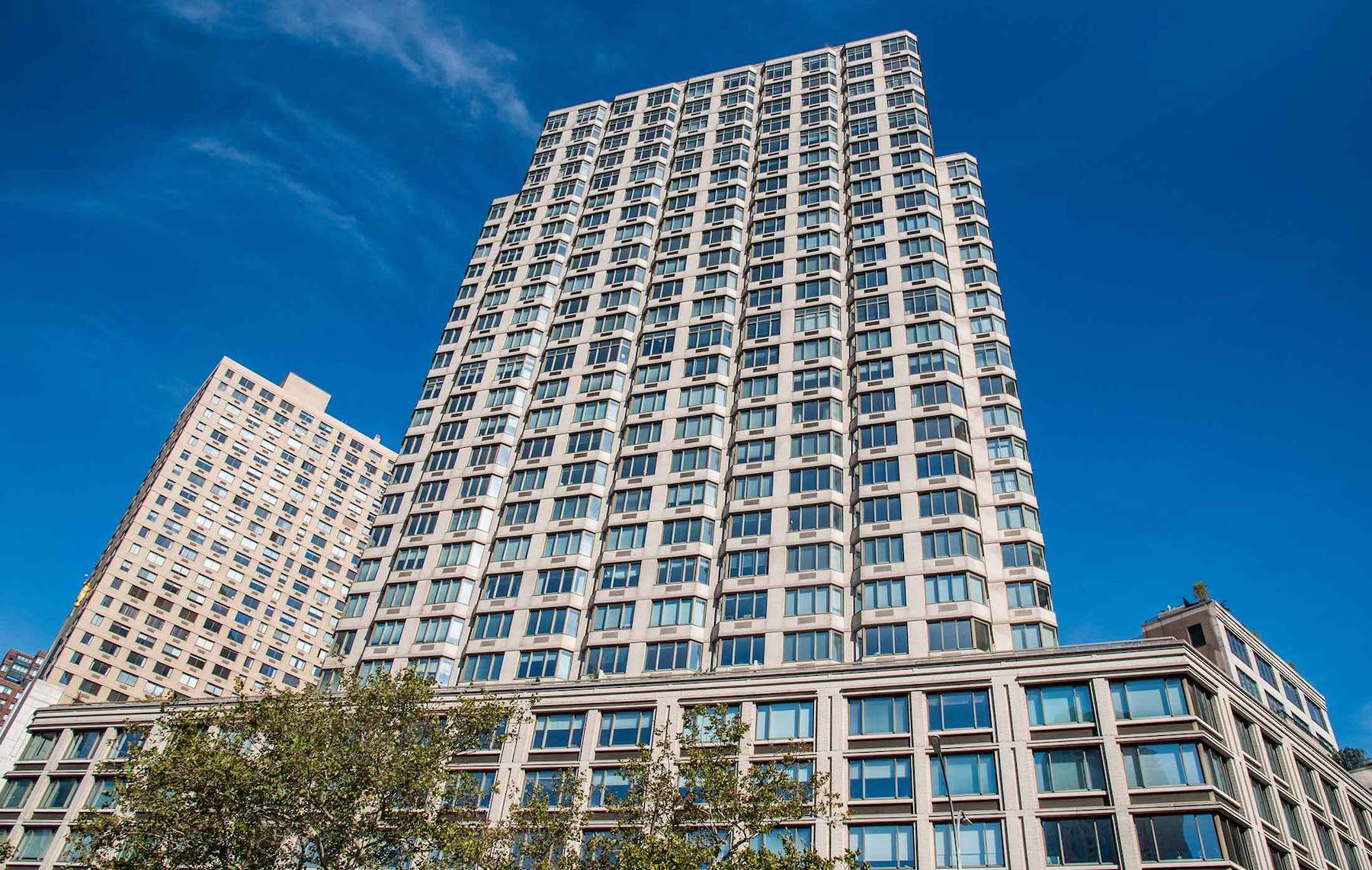In early 2022, the developer and property manager Glenwood Management, working with CarbonQuest, which specializes in turnkey solutions to reduce CO2 emissions from buildings, initiated what was touted as the first commercially operational building carbon capture on the market, at Glenwood’s 30-story 377,564-sf 232-apartment Grand Tier building at 1930 Broadway in New York City, which opened in 2005. This modular system, installed in the building’s parking garage, took up the equivalent of just three parking spaces.
At the time of that installation, CarbonQuest’s CEO Shane Johnson said the system was expected to eliminate about 25 percent of the building’s annual carbon dioxide emissions with zero interruption to tenants, with the longer-range goal of cutting between 60-70 percent of the building’s emissions.
Having deemed the pilot a success, CarbonQuest is now installing its decarbonization technology into another five of Glenwood’s multifamily New York properties: The Fairmont at 300 East 75th Street, The Paramount Tower at 240 East 39th Street, The Bristol at 300 East 56th Street, The Barclay at 1755 York Avenue, and The Somerset at 1365 York Avenue.
This rollout is occurring in anticipation of New York City’s Local Law 97, which in 2024 will start penalizing buildings over 25,000 sf that don’t meet new energy efficiency and greenhouse gas emission limits that will get even stricter in 2030 and 2035. Based on their current carbon use, Glenwood’s properties would incur penalties of about $7 million between 2024 and 2029 without CarbonQuest’s technology, and another $15 million in penalties from 2030 through 2034.
Other cities, such as Boston, Philadelphia and Chicago, are traveling on the same regulatory path.
“A growing number of property owners are evaluating our carbon capture technology, and we are excited to continue partnering with forward-thinking real estate operators to reduce carbon emissions in the built environment,” says Brain Asparro, COO of CarbonQuest, which was founded in 2019 in Seattle.
From gas to liquid

Onsite natural gas combustion generates more than half of total building CO2 that represent between 60 and 90 percent of total emissions in cities globally, states CarbonQuest. The company estimates that its system can eliminate more than 1,000 tons of CO2 emissions per building per year.
It works this way: CarbonQuest’s proprietary technology captures CO2 from a building’s flue exhaust before it escapes as a greenhouse gas. Subsequent to this capture, the CO2 undergoes a multistage process that isolates carbon dioxide from nitrogen and oxygen, and cools the CO2 to a liquid state that gets stored in a bulk tank. CarbonQuest sells this trademarked Sustainable CO2 to companies that are focused on carbon utilization and sequestration.
For example, the Sustainable CO2 from Glenwood’s properties is earmarked to be sold to Glenwood Mason Supply (unaffiliated with the developer), a New York-based masonry firm, which will sequester the CO2 permanently in concrete blocks.
CarbonQuest’s modular systems comes in several sizes to support different building types and applications. Its carbon capture process at each property it’s installed in is coupled with carbon management software that provides real-time data and analytics to verify, measure, and report CO2 emissions to third-party verifiers, auditors, and regulators.
Related Stories
Green | Jun 26, 2023
Federal government will spend $30 million on novel green building technologies
The U.S. General Services Administration (GSA), and the U.S. Department of Energy (DOE) will invest $30 million from the Inflation Reduction Act to increase the sustainability of federal buildings by testing novel technologies. The vehicle for that effort, the Green Proving Ground (GPG) program, will invest in American-made technologies to help increase federal electric vehicle supply equipment, protect air quality, reduce climate pollution, and enhance building performance.
Industrial Facilities | Jun 20, 2023
A new study presses for measuring embodied carbon in industrial buildings
The embodied carbon (EC) intensity in core and shell industrial buildings in the U.S. averages 23.0 kilograms per sf, according to a recent analysis of 26 whole building life-cycle assessments. That means a 300,000-sf warehouse would emit 6,890 megatons of carbon over its lifespan, or the equivalent of the carbon emitted by 1,530 gas-powered cars driven for one year. Those sobering estimates come from a new benchmark study, “Embodied Carbon U.S. Industrial Real Estate.”
Mechanical Systems | Jun 16, 2023
Cogeneration: An efficient, reliable, sustainable alternative to traditional power generation
Cogeneration is more efficient than traditional power generation, reduces carbon emissions, has high returns on the initial investment, improves reliability, and offers a platform for additional renewable resources and energy storage for a facility. But what is cogeneration? And is it suitable for all facilities?
Resiliency | Jun 14, 2023
HUD offers $4.8 billion in funding for green and resilient building retrofit projects
The Department of Housing and Urban Development (HUD) recently released guidelines for its Green and Resilient Retrofit Program (GRRP) that has $4.8 billion for funding green projects.
Mass Timber | Jun 13, 2023
Mass timber construction featured in two-story mixed-use art gallery and wine bar in Silicon Valley
The Edes Building, a two-story art gallery and wine bar in the Silicon Valley community of Morgan Hill, will prominently feature mass timber. Cross-laminated timber (CLT) and glulam posts and beams were specified for aesthetics, biophilic properties, and a reduced carbon footprint compared to concrete and steel alternatives.
Urban Planning | May 25, 2023
4 considerations for increasing biodiversity in construction projects
As climate change is linked with biodiversity depletion, fostering biodiverse landscapes during construction can create benefits beyond the immediate surroundings of the project.
Mass Timber | May 23, 2023
Luxury farm resort uses CLT framing and geothermal system to boost sustainability
Construction was recently completed on a 325-acre luxury farm resort in Franklin, Tenn., that is dedicated to agricultural innovation and sustainable, productive land use. With sustainability a key goal, The Inn and Spa at Southall was built with cross-laminated and heavy timber, and a geothermal variant refrigerant flow (VRF) heating and cooling system.
Sustainable Design and Construction | May 23, 2023
Hord Coplan Macht names Ilijana Soldan as Sustainability Manager
Hord Coplan Macht, Baltimore, MD., has promoted Ilijana Soldan, AIA, LEED AP, EcoDistricts, NCARB, to Sustainability Manager.
Office Buildings | May 15, 2023
Sixteen-story office tower will use 40% less energy than an average NYC office building
This month marks the completion of a new 16-story office tower that is being promoted as New York City’s most sustainable office structure. That boast is backed by an innovative HVAC system that features geothermal wells, dedicated outdoor air system (DOAS) units, radiant heating and cooling, and a sophisticated control system to ensure that the elements work optimally together.
Headquarters | May 9, 2023
New Wells Fargo development in Texas will be bank’s first net-positive campus
A new Wells Fargo development in the Dallas metroplex will be the national bank’s first net-positive campus, expected to generate more energy than it uses. The 850,000-sf project on 22 acres will generate power from solar panels and provide electric vehicle charging stations.
















